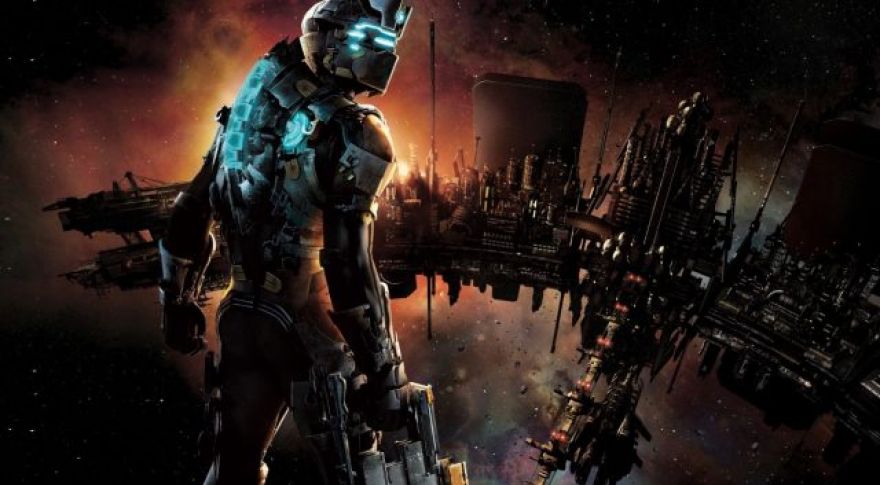
Dead Space Developer Visceral Games is Dead, and That Sucks
EA has announced that Visceral Games, the developer of games like Battlefield: Hardline and Dead Space is shutting down, effective immediately. The Star Wars title the studio had worked on is also being shut down. While EA isn’t literally canceling the project altogether, it’s going to fundamentally overhaul the game.
EA’s Patrick Söderlund :
Our Visceral studio has been developing an action-adventure title set in the Star Wars universe. In its current form, it was shaping up to be a story-based, linear adventure game. Throughout the development process, we have been testing the game concept with players, listening to the feedback about what and how they want to play, and closely tracking fundamental shifts in the marketplace.
It has become clear that to deliver an experience that players will want to come back to and enjoy for a long time to come, we needed to pivot the design. We will maintain the stunning visuals, authenticity in the Star Wars universe, and focus on bringing a Star Wars story to life. Importantly, we are shifting the game to be a broader experience that allows for more variety and player agency, leaning into the capabilities of our Frostbite engine and reimagining central elements of the game to give players a Star Wars adventure of greater depth and breadth to explore.
We can’t really speculate on the state of the Star Wars game Visceral was working on, or whether this move is the right thing for the title. But I recently spent some time replaying all the Dead Space games, back-to-back-to-back. Playing them that way actually gave me what I think is a better window into why the studio made some of the decisions it did.
Deconstructing Dead Space
The original Dead Space has generally lousy PC controls, and “feels” very much like a 30fps game (unless you unlock the frame rate, which hilariously also accelerates saved game loads). But I was struck by how carefully it shapes the player’s introduction to the world. Your various abilities are introduced one at a time, and always in a way that tasks you with using them to solve a puzzle. You only encounter enemies in conjunction with puzzles once you’ve had an opportunity to stretch your legs first.
The game is light on pure jump scares, but that doesn’t mean it isn’t scary. Sometimes being able to see what’s coming is worse.
Most Necromorph types are also introduced in solo encounters. Sometimes these encounters actually show you what the Necromorph in question is capable of doing or how it moves throughout the world without you firing a shot. Other times, in-game characters warn you about Necromorphs they’ve seen. The game’s plot twists and survival horror mechanics aren’t always perfect–the UI definitely needed some refinement–but even on the PC, the game shines through.
Dead Space 2 takes everything great about Dead Space and turns it up to 11. The original game’s formula is tweaked and polished, with a better UI and a much smoother 30fps frame rate. I’m genuinely not sure how all three games–which run at a constant, locked 30fps by default–manage to feel so different, but they do. Dead Space “feels” like 30fps, DS2 feels more like 40-45, and DS3 feels more like 50+. In all three cases, the actual unlocked frame is superior to the locked frame rate, but the locked rate still improves in all cases. (I used the locked frame rate while playing on a laptop to reduce system noise.)
Dead Space 2 introduced a great deal of lore into Dead Space, tightened the gameplay loops, introduced the protagonist as a speaking character as opposed to a silent protagonist, and added some new Necromorphs–think zombies, but made of the radically reshaped bones and tissue of the dead as opposed to a shambling always-humanoid corpse. The PC port was better, even if the new lore didn’t always mesh with what the original Dead Space had left people thinking, however.
Dead Space 3 was the least popular game in the series, but playing it directly after Dead Space 2 gave me a much better sense of what Visceral was trying to accomplish. Unlike the first two games, which take a narrow and specific slice of time and lore (events on one ship, events on one space station), and don’t offer any real explanation for why Necromorphs and the Markers that create them exist, Dead Space 3 tackles both questions, while simultaneously shaking up the gameplay by going from survival-horror to something more like action-horror. This made some sense, thematically, since Isaac Clarke had already survived two previous Necromorph infestations. But it made less sense mechanically, and it hurt the game with players who had enjoyed the first and second title–particularly given that the second game is a fabulous example of how to balance moments of slow exploration with quick-paced frantic play.
Dead Space 3 introduced its own set of new monsters and co-op play, but wasn’t as popular as DS2.
It didn’t help that the plot arc that Visceral developed had some significant holes. Dead Space 3 wasn’t a bad game, but it was longer, more exposition-driven, and differently paced from its predecessors, and it suffered somewhat compared with gamer expectations. Its microtransactions were also unpopular. But the game was better, I think, than it got credit for. It also had some co-op missions to add fresh dimensions to gameplay, though these were optional.
Still, all three games were pretty dang good, and playing through them back-to-back gave me a window on why Visceral made some of the choices it did. Hopefully the closing of the studio doesn’t mean we’ll never revisit the DS universe, though right now there doesn’t seem to be much chance of it. And if you like survival-horror games with an unusual and fresh take on sci-fi lore–even knowing the games aren’t perfect–I’d highly recommend all three.
Now read: